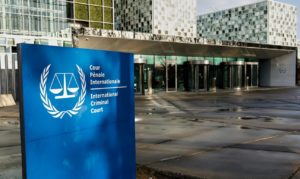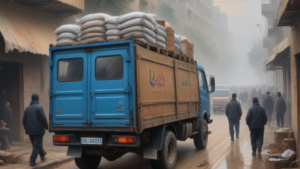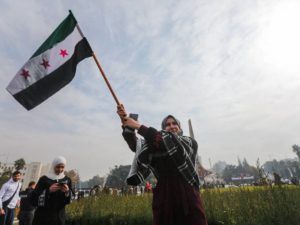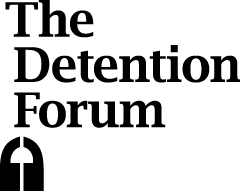A year ago, the world watched with alarm and disbelief as the Western-backed regime in Afghanistan crumbled. As the Taliban marched, unopposed, into Kabul they knew they were making history. For the second time in living memory – first the Soviets and now, the US-led coalition backed by NATO – a ragtag but dedicated guerilla insurgency had defeated a superpower.
| Urgent and Remedial Action is Required The situation for Afghan citizens is worsening day by day because of the actions of the international community. It is morally, politically, and economically wrong to make the people of Afghanistan pay – often with their lives – for a crisis not of their making. UAI calls on UN Member States, donors, humanitarian actors, and other stakeholders to take urgent action in four specific areas: – Prioritize policies and programmes that avoid harming and marginalizing women and are informed by economic and social as well as civil and political human rights. Oppressive Taliban rule, including gender apartheid, means that women and girls are penalized for not being male. This is not an acceptable or just reason to heap more harm and suffering on Afghans including women and girls who are a high proportion of those most adversely affected by poverty and hunger. – Robust and determined engagement with the Taliban is a must. However repellent their policies, it is urgent to find practical ways to allow the economy to function. Not doing so will likely push the de facto authorities towards a pariah state status with consequences well beyond Afghanistan’s borders. – Economic warfare against the people of Afghanistan must stop. Practical and pragmatic solutions exist for the gradual, internationally monitored release to the central bank of Afghanistan (DAB) of the more than USD 9 billion of Afghan reserves sequestered by the US and its allies. These assets are required by DAB to carry out its vital functions such as currency auctions and injection of liquidity that are critical to a functioning economy. The obstacles are political. They must be lifted forthwith. – Humanitarian action, in any setting including Afghanistan, is NOT a substitute for a functioning economy. Donors and humanitarian actors need to acknowledge this reality and push for the release of Afghanistan’s frozen reserves and for a revived banking system. Sanctions should be adjusted, where necessary, to give banks the confidence to carry out normal transactions that will also facilitate the transfer of aid agency funds to enable effective and timely frontline programming. |
Beyond the horrific scramble at Kabul International Airport in August last year, the return of the Taliban was met by most Afghans with a mix of relief and anxiety. Relief because the war – for all practical purposes – was over. Anxiety because of the uncertainties ahead.
Afghanistan is a much-changed country after decades of warfare and massive displacement coupled with social and economic transformations. However, it was not clear whether and how the Taliban Movement had changed. Would they impose the same authoritarian and discriminatory rule as when they were in power from 1996 to 2001? What would happen to civil society, to a vibrant media sector, to the education and employment of girls and women?
The US and its partners have invested at least 3 trillion USD[1] in an occupation that talked of peace, democratic governance, and human rights. The discrimination faced by women and girls was presented as a major rationale for the US invasion in October 2001. However, the chaotic withdrawal of the US and the massive airlift of much of the urban elite in August 2021 were coupled with the decision to engage in economic warfare. This meant that the cessation of external financing and seizure of Afghanistan’s foreign reserves left Afghans with the twin realities of the return of the Taliban regime and a massive increase in poverty and hunger that disproportionately affects women, many of whom are destitute.
It is time to undo callous and irresponsible policies.
For the past 12 months, UAI has been tracking and analyzing developments in Afghanistan focusing on the freezing of Afghanistan’s external reserves and the devastating consequences of this for the economy and the livelihoods of Afghans.
Western media, donors and human rights organizations have mostly focused on the Taliban’s restrictive policies vis-à-vis women and girls and to some extent on the distressing humanitarian situation. Increasingly, attention is shifting to the economic predicament arising from the arbitrary sequestration of the Afghan people’s external reserves. Unless ways are found to unblock the current situation and begin the release of these vital resources to the DAB in a periodic and monitored fashion, the devastation of Afghan lives and livelihoods will persist and intensify.
A growing number of civil society, advocacy, and other groups including humanitarian NGOs, are now engaged in challenging the politically-driven decisions of the US and European governments. UAI is working with concerned groups and networks including the Unfreeze Afghanistan coalition and the Center for Economic Policy Research (CEPR). In March 2022, UAI sent a letter signed by some 50 international personalities to President Biden calling for the release of the Afghan reserves. A letter signed by 72 economists was recently sent by CEPR with a similar request.
So far there has been no significant change in the position of the US and its allies. The US has, however, recently indicated that it will resume talks with the Taliban and others on its decision to block the DAB from accessing Afghan external reserves. It is, therefore, critical to maintain a spotlight on, and continue to document, the inhumanity of the suffering that is being imposed on the Afghan people.
“I think engagement is the thing that is really crucial to success in Afghanistan.” Reto Stocker, ICRC Special Advisor, Kabul.
This past year highlights the urgency of remedial action that needs to take account of the divergent dynamics fuelling the crisis and its cost to Afghan citizens. These include:
No war, but no peace dividend. For the first time in 40+ years, most Afghans have not had to worry about the type of warfare – air strikes, night raids and IED (improvised explosive device) attacks – that routinely killed Afghans in their homes, workplaces, and markets. Most Afghans have lived in relative peace for the past year. Armed conflict has greatly diminished. Civilian casualties have dropped by approximately 75%.[2] Security has improved in most of the country. Roads are generally safe. Aid agencies can move around freely. Terror attacks by ISIS-K pose significant threats as do scattered incidents of armed resistance in areas where Taliban support is weak. The ability of women and girls to benefit from enhanced physical security is limited given the introduction of draconian policies. These reinforce the deep-rooted discrimination that has been the lot of most Afghan females since before the creation of the Afghan state – notwithstanding periodic bouts of positive change in terms of education, mobility, and ability to participate in the public sphere. In sum, peace is welcome but fragile. Moreover, so far, there has been no peace dividend for the vast majority of Afghans. Quite the contrary.
Human rights, always problematical, have deteriorated. The return of the Taliban to Kabul refocused attention on a human rights situation long undermined by impunity and structural violence. This was compounded by corrupt and dysfunctional rule of law and judicial systems that contributed to the marginalization of women and other disenfranchised Afghans. Many organizations and individuals are, rightly, invested in highlighting Taliban disregard of fundamental rights and freedoms including, in particular, the situation of women, girls and certain minorities. Restrictions on the media, arbitrary detention, and extrajudicial killings have also been highlighted. Relatively little attention, however, has been focused on economic rights as well as the right to food, health care and a means of livelihood. For the vast majority of Afghans, life is a daily nightmare given the sanctions-imposed collapse of the economy and banking sector.
Ill fares the land. A deadly combination of disasters, including an earthquake, drought, and floods, has affected more Afghan lives and livelihoods as never before. This perfect storm of crises resulting from natural hazard-related events has been compounded by the abrupt termination of external aid and budgetary support. Western and other donors funded 75% of Afghanistan’s annual budget until August 2021 thereby ensuring the availability of essential services such as the health care which is now on the verge of collapse given lack of funding. International support has been limited to humanitarian help – essential and still insufficient – which is not a substitute for a functioning economy. As a result, poverty and food insecurity have increased dramatically. More than 90% of Afghans have been food insecure this past year. Almost 20 million people are experiencing acute levels of food insecurity and the lives of 1.1 million children with severe acute malnutrition are at risk. Poverty has now taken over from conflict as the primary driver of displacement. A staggering 82% of families are in debt. In addition, Afghanistan is experiencing a severe brain drain as many thousands of Afghan professionals have fled the country as well as tens of thousands of others who are obliged to migrate or seek refuge abroad to secure their survival.
Economic warfare has displaced armed conflict as a major threat to life and well-being. The international community, with the defeated Western powers in the lead, are imposing collective punishment on the Afghan people by arbitrarily sequestering the sovereign external reserves of the central bank, the Da Afghanistan Bank (DAB). These vital resources belong to the Afghan people.
“Release of these reserves will allow the Central Bank to fulfill its primary objective of price stability by conducting foreign exchange auctions and preventing the depreciation of the local currency in order to maintain price stability. A stable currency is important; it determines a nation’s health and the well-being of its people. Without it, ordinary Afghans will not be able to afford the basic necessities of life. Higher prices are one of the major causes of poverty and can be remedied by releasing Afghan reserves. These reserves should be used for the purpose of price stability and not for humanitarian relief.” Dr. Shah Mehrabi, Economics Professor, Montgomery College, Maryland and member of the DAB’s Board of Governors
Action by the US and various Western countries to block the DAB’s access to Afghan funds is a calamitous political decision that has devastating economic and social consequences: the economy has largely ground to a halt, the banking system is practically paralyzed, traders face enormous problems to export or import their wares, and Afghans cannot access their savings. The world’s richest and most powerful countries that are to a large extent responsible for the events that led to the return of the Taliban to Kabul last year are effectively telling Afghan citizens that it is OK to resort to extreme coping mechanisms to stave off hunger. This is callous, reprehensible and irresponsible.
“Families (were) eating boiled grass, parents selling their children, fathers selling their kidneys” Comments by Medea Benjamin, a co-founder of CODEPINK, who visited Afghanistan earlier this year, where she found appalling levels of poverty with
“Hell on earth. Mothers are having to choose: do I buy – if I have any money at all – cooking fuel or heating fuel? Do I freeze my child to death, or do I starve my child to death? That’s what they’re facing now” David Beasley, Executive Director of the World Food Programme, describing the situation in Afghanistan.
[1] 2.3 trillion for the US taxpayer so far. Likely to grow to up to 6.5 trillion to include veteran care and debt repayment. See https://theconversation.com/calculating-the-costs-of-the-afghanistan-war-in-lives-dollars-and-years-164588
[2] Civilian casualties included 700 fatalities between mid-August 2021 and mid-June 2022 see: https://reliefweb.int/report/afghanistan/human-rights-afghanistan-15-august-2021-15-june-2022-endarip By contrast, UNAMA (UN Assistance Mission for Afghanistan) reported 1,659 deaths in the first half of 2021, https://news.un.org/en/story/2021/07/1096382
Photo © WFP / Marco Di Lauro. Women move food from a distribution site on the outskirts of Herat, Afghanistan in 2021.











